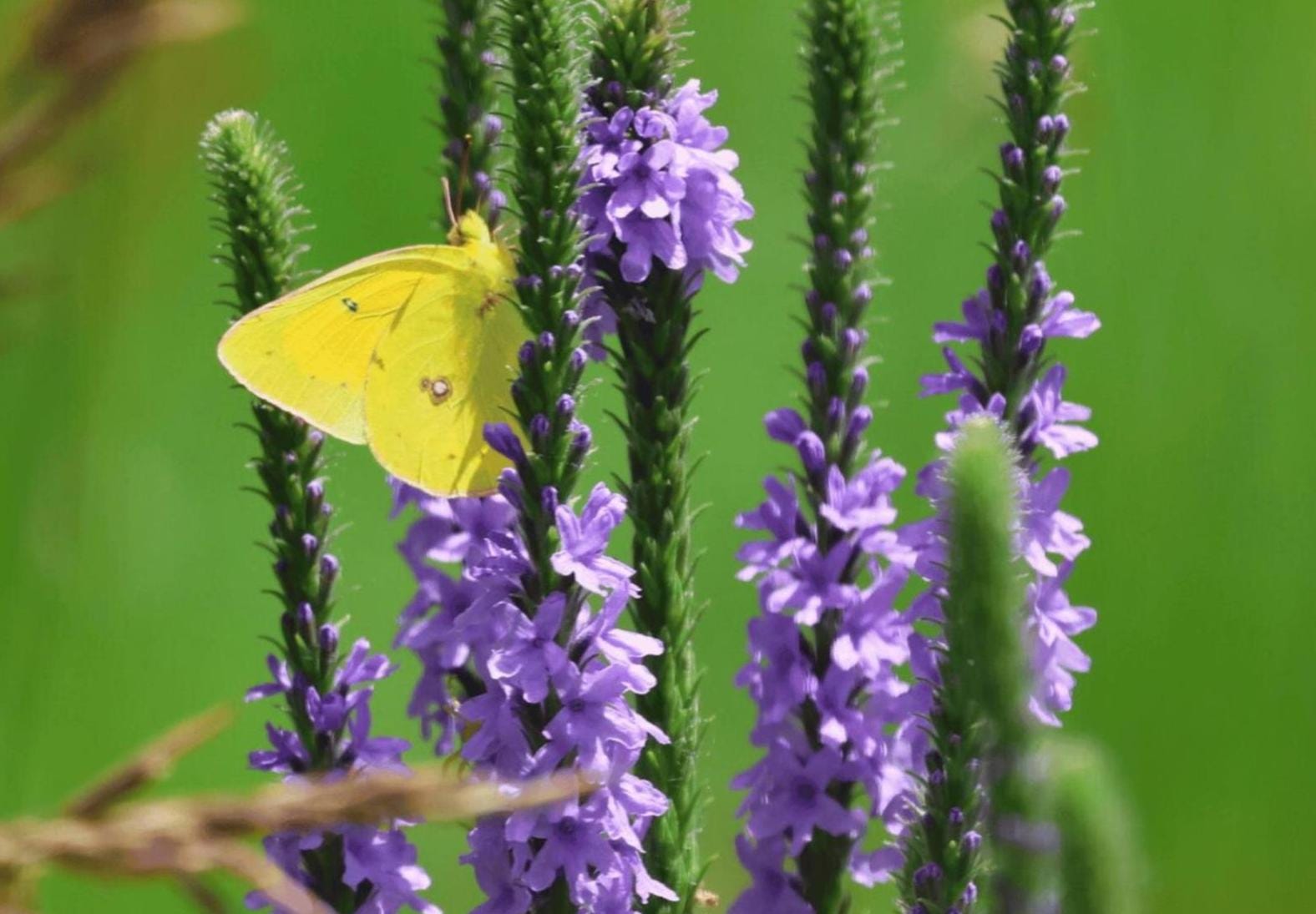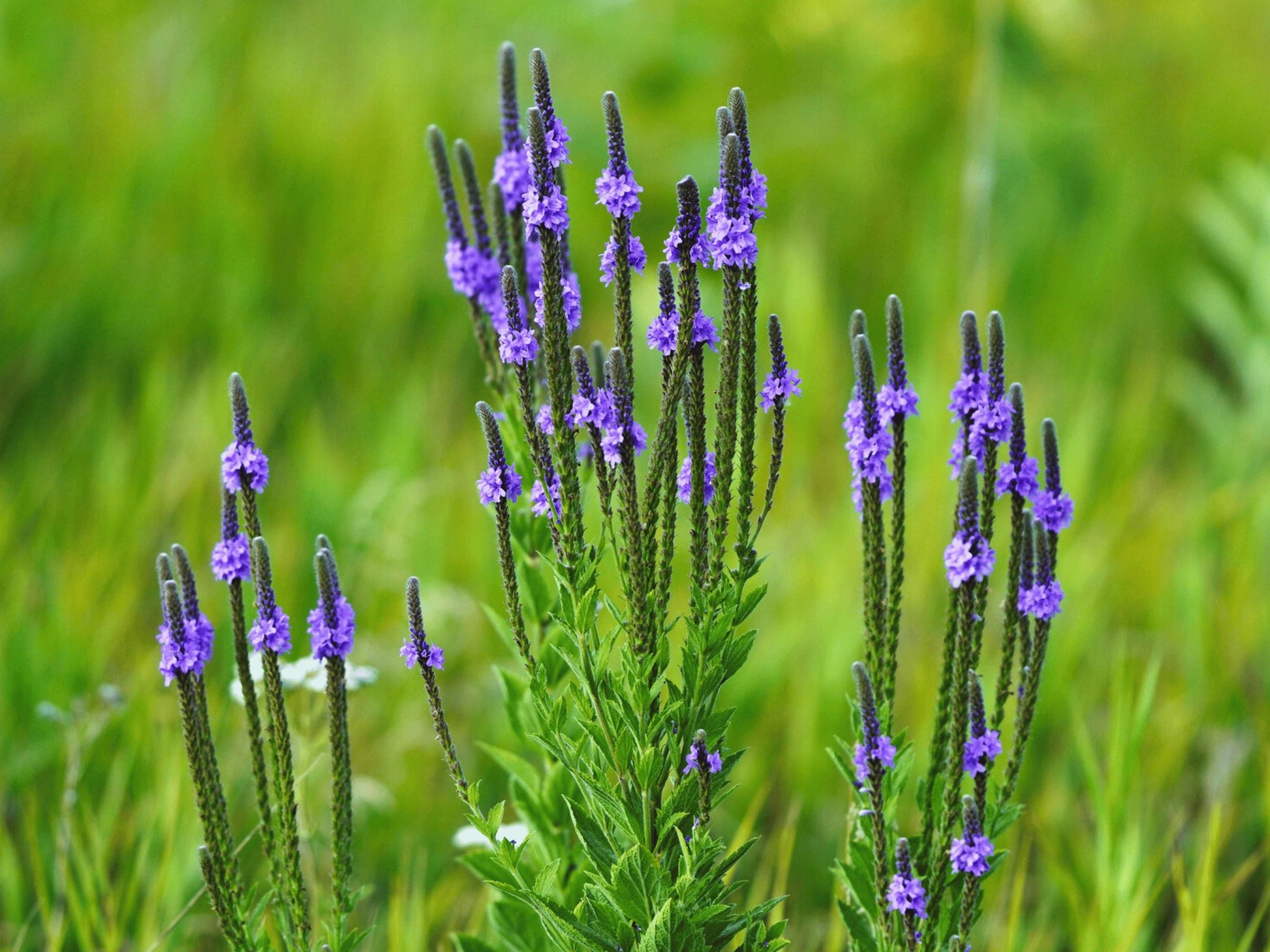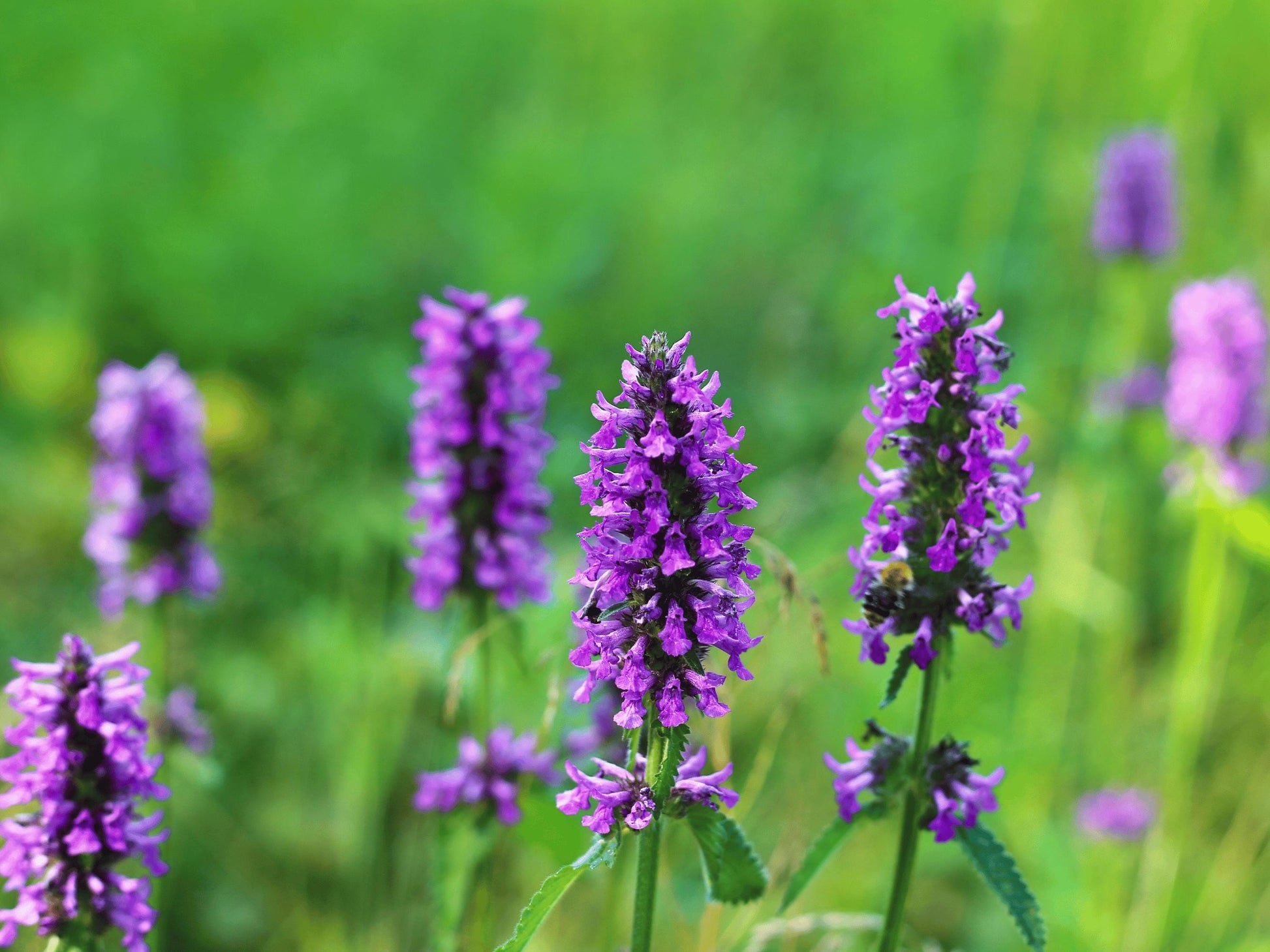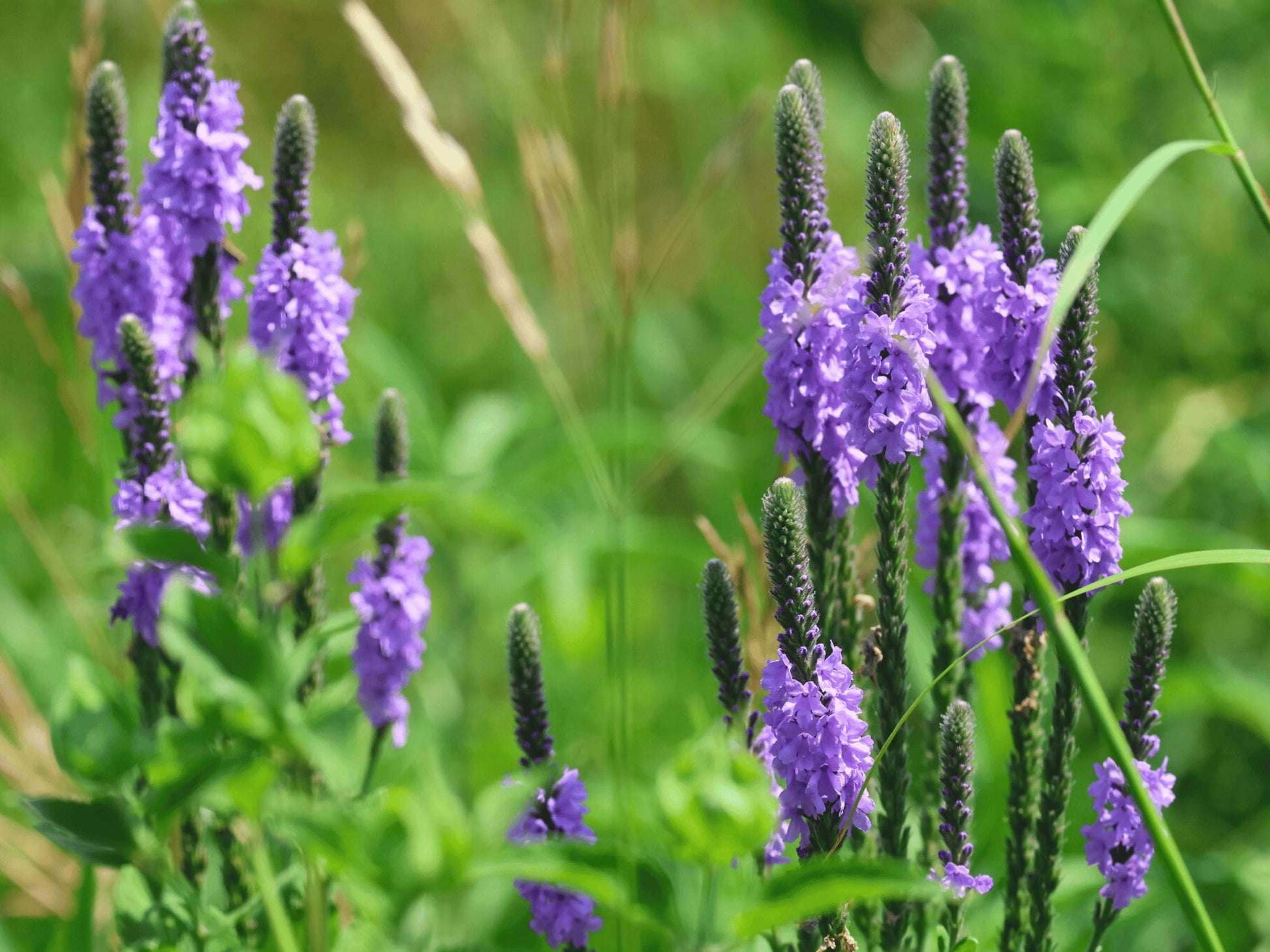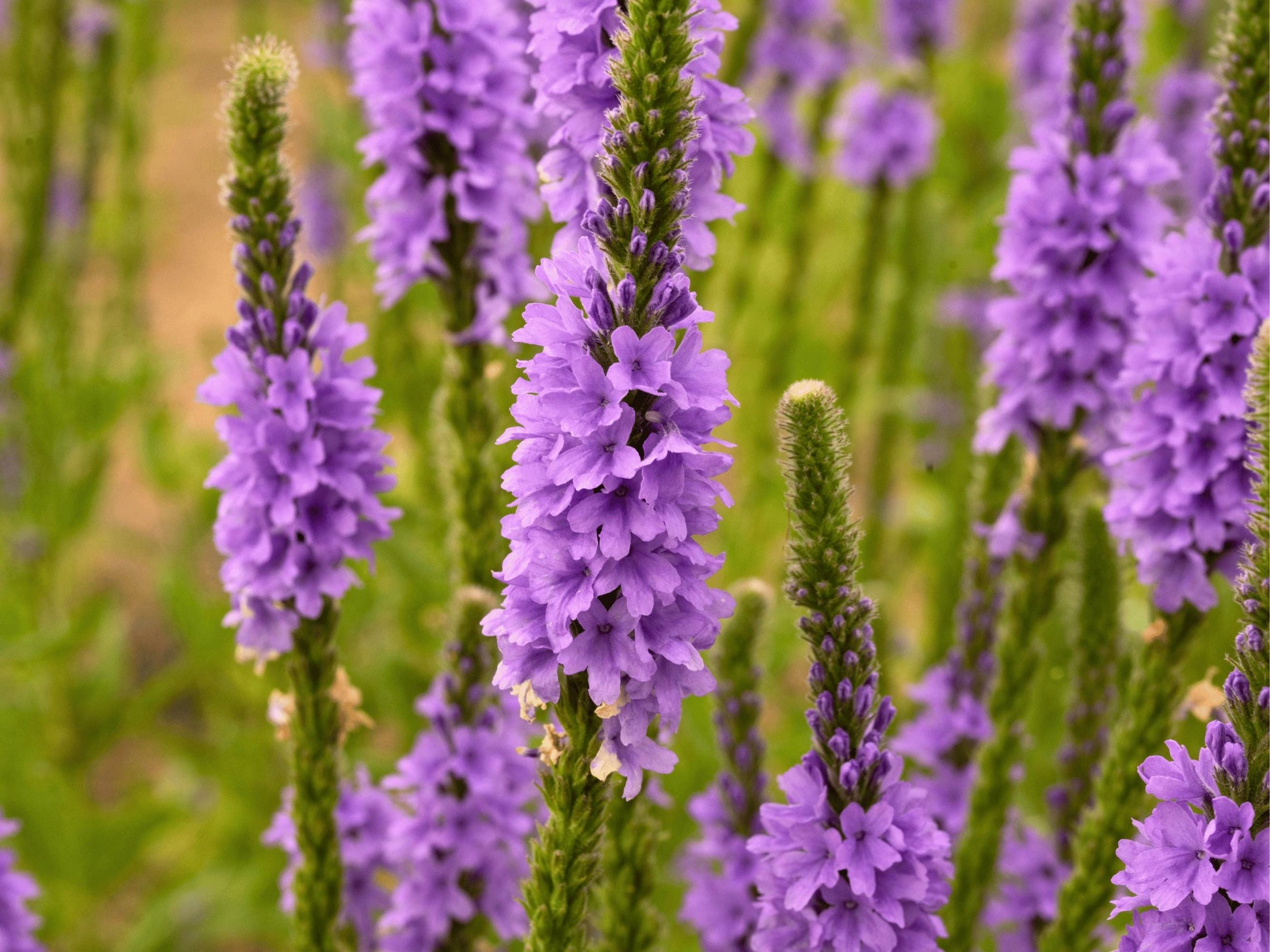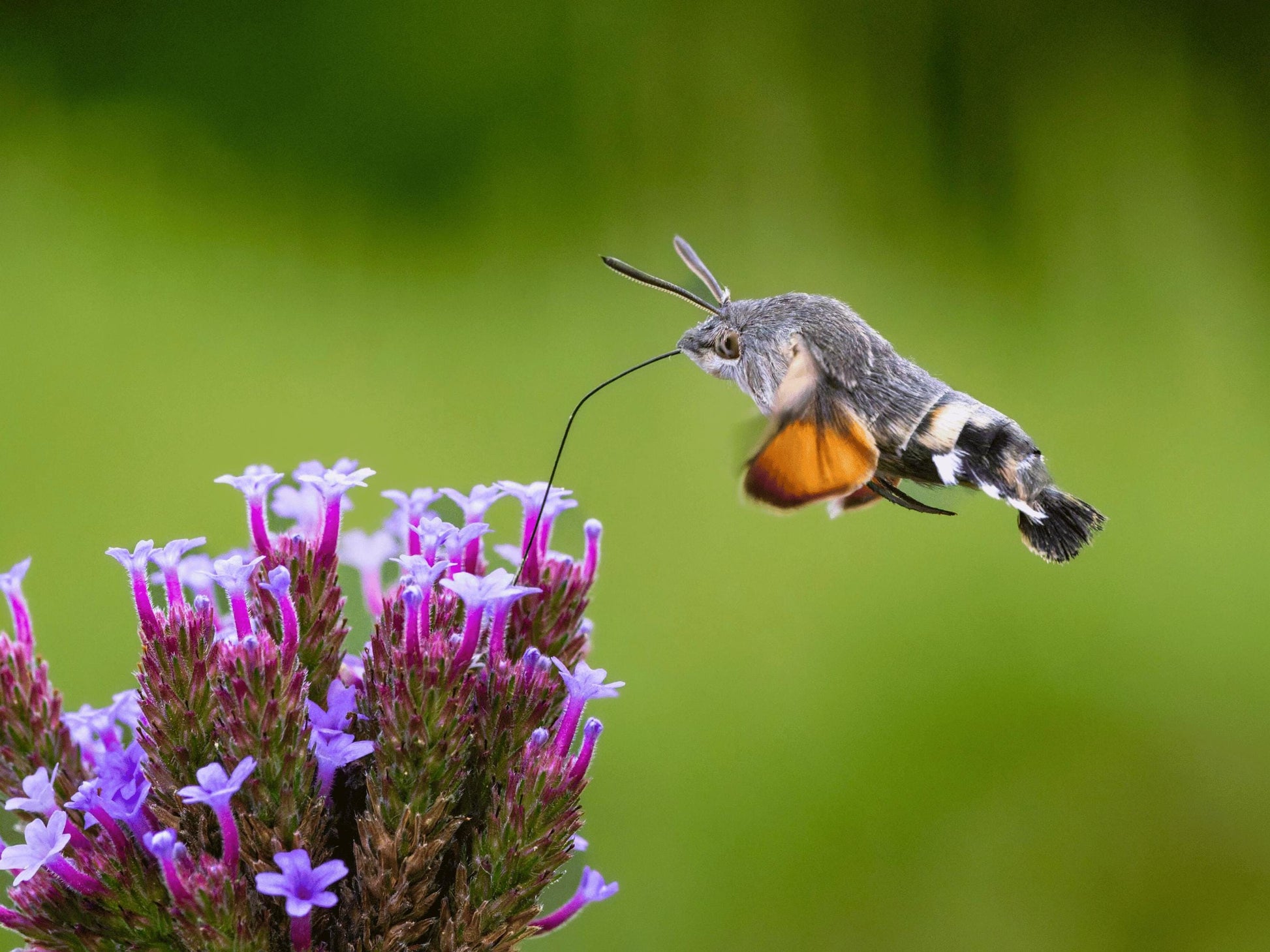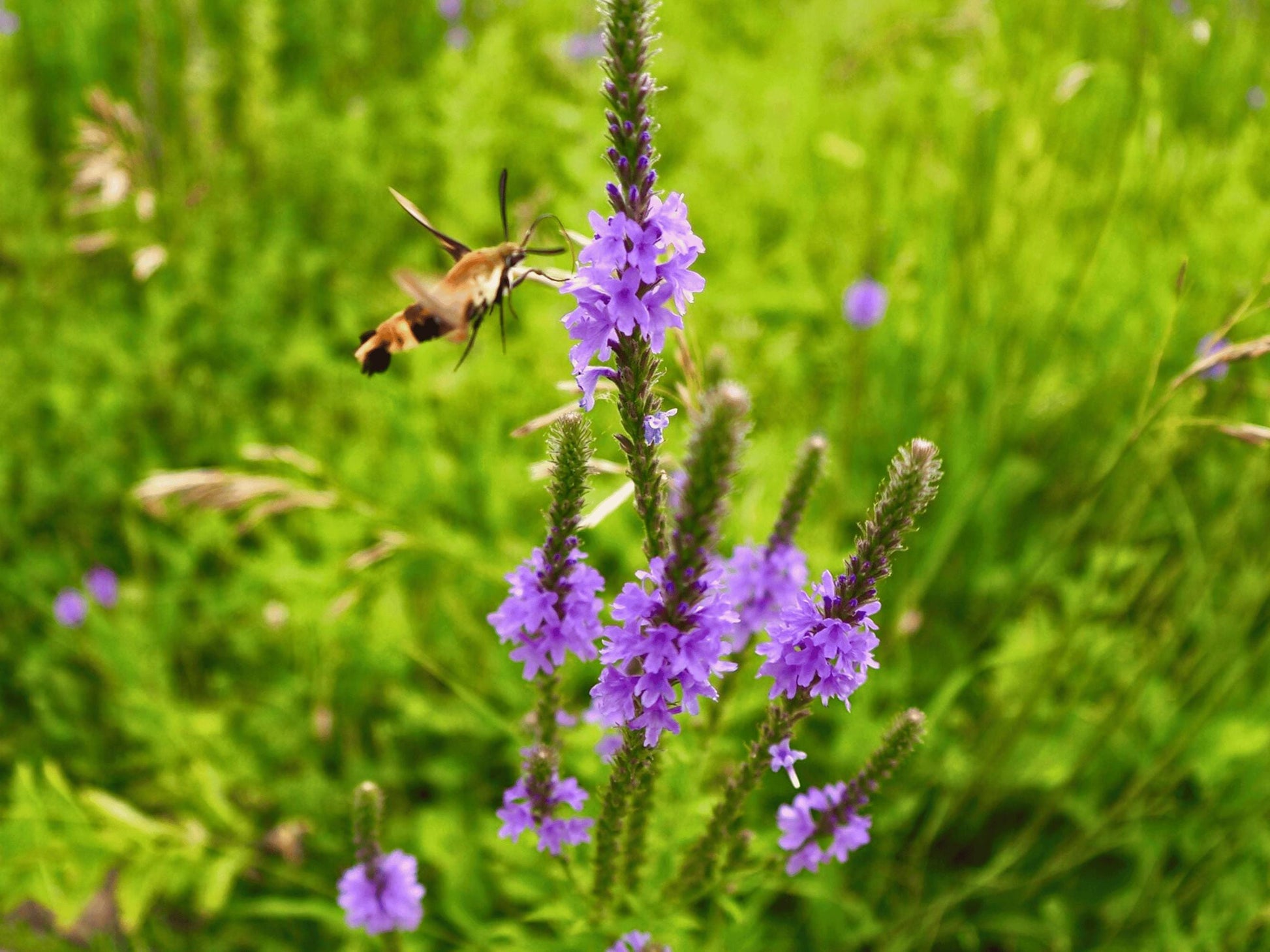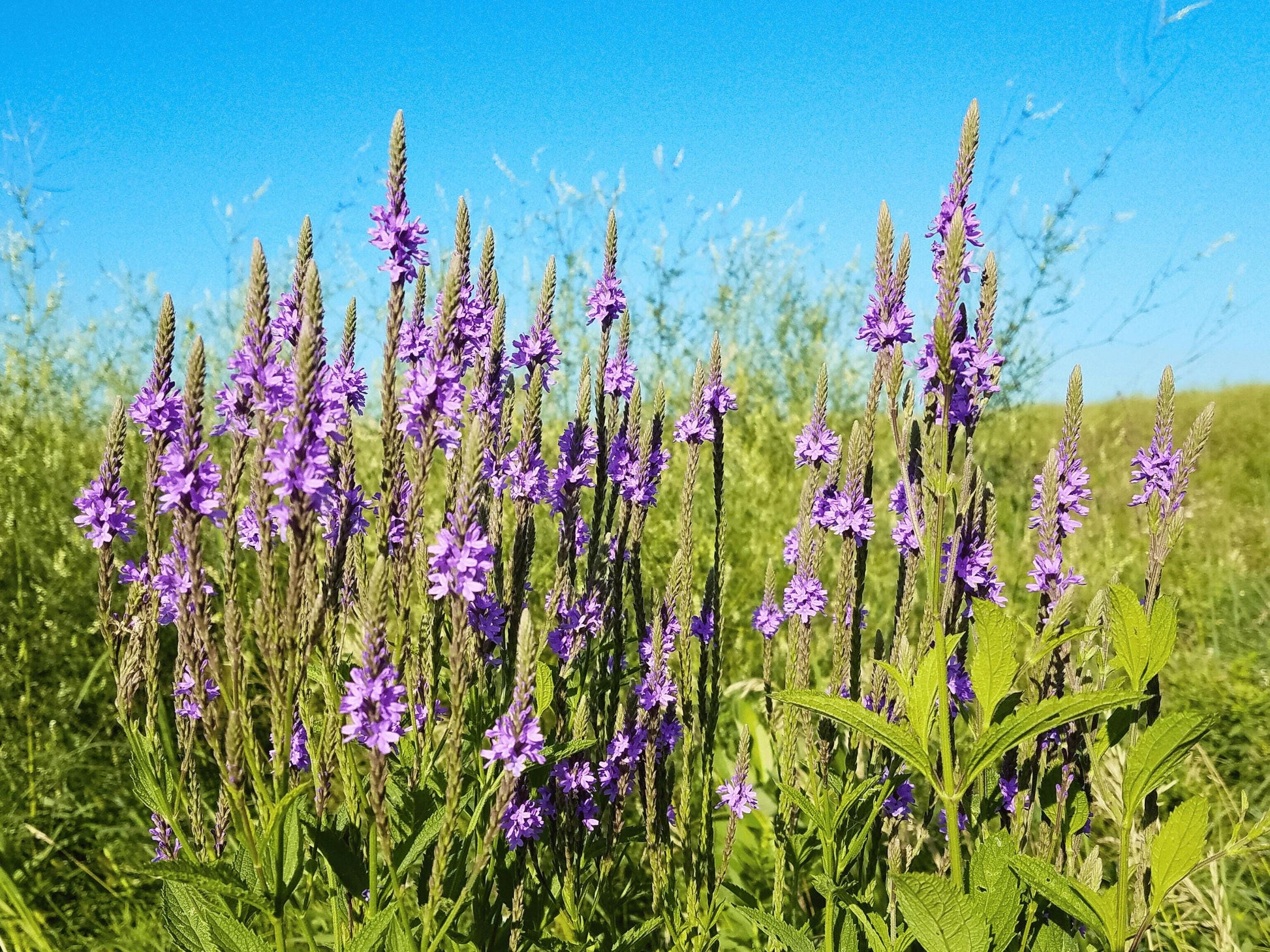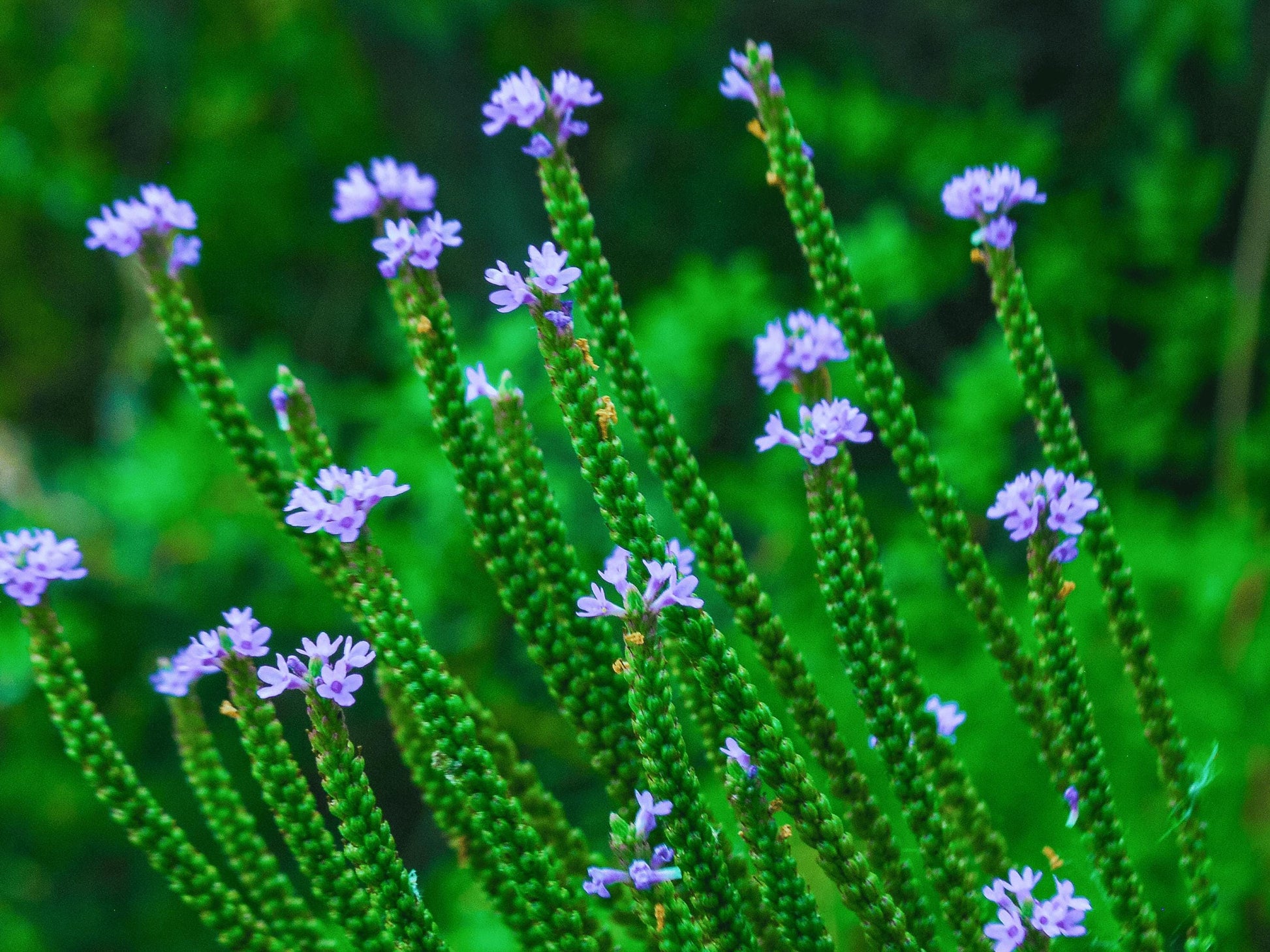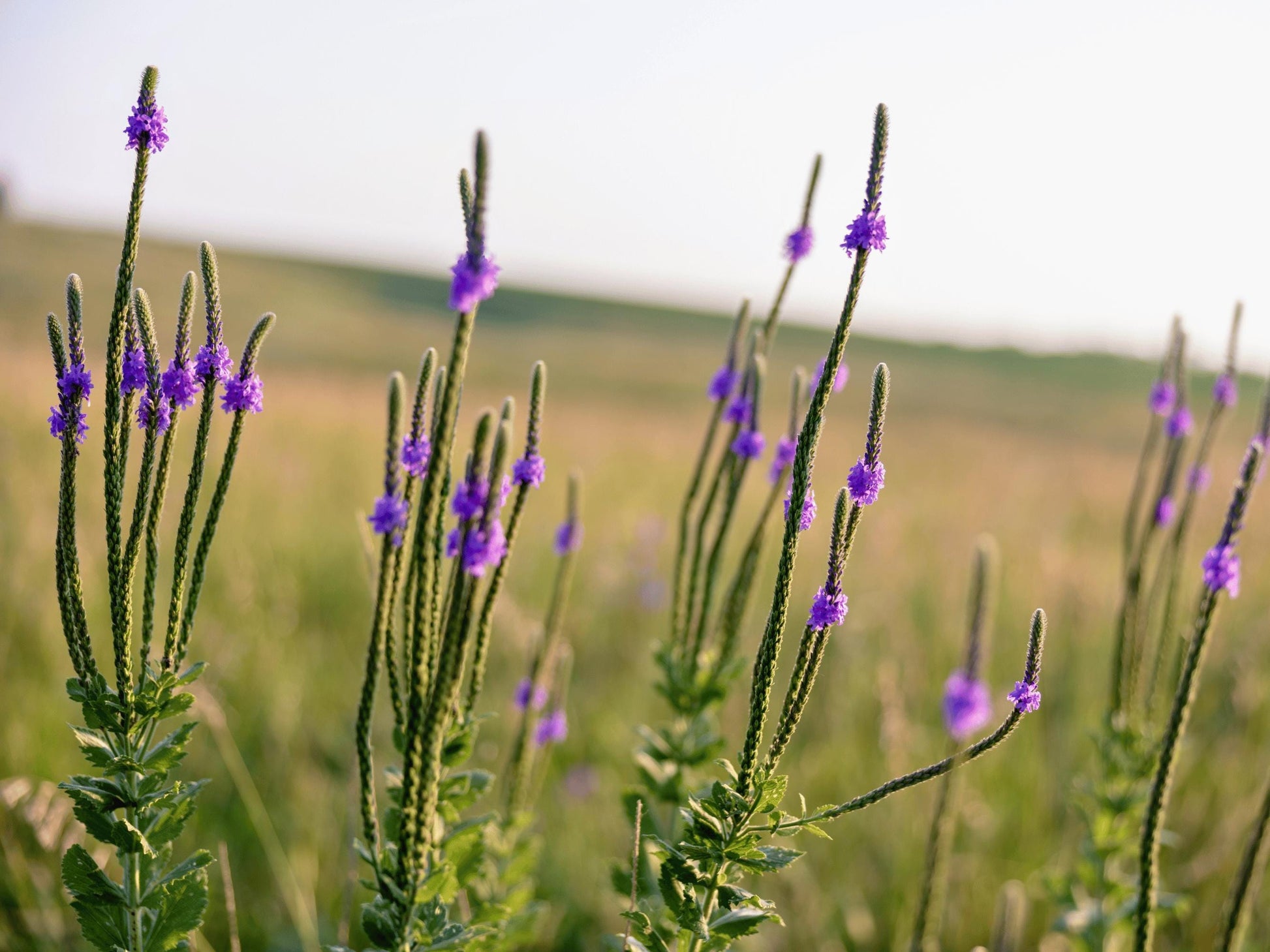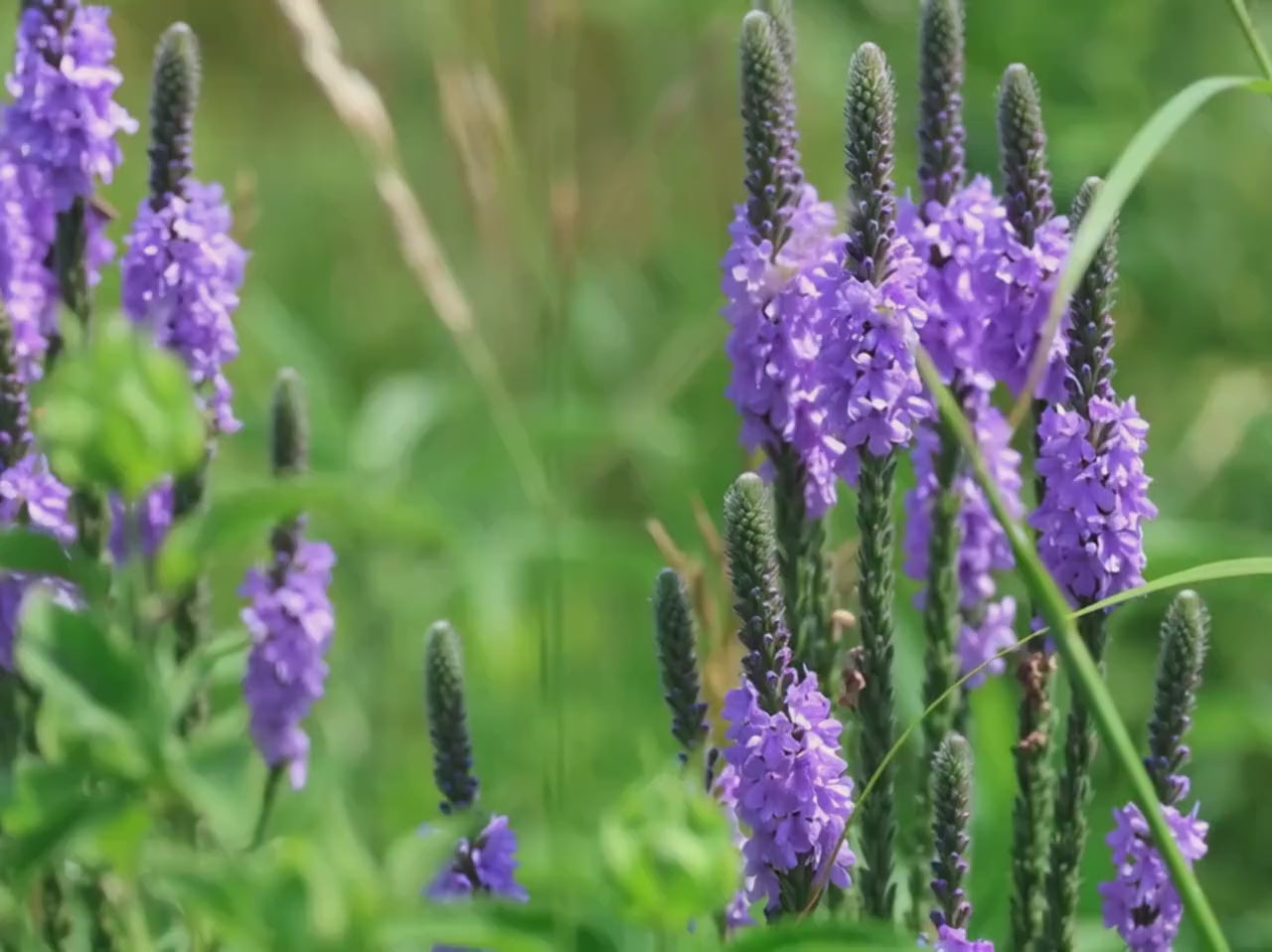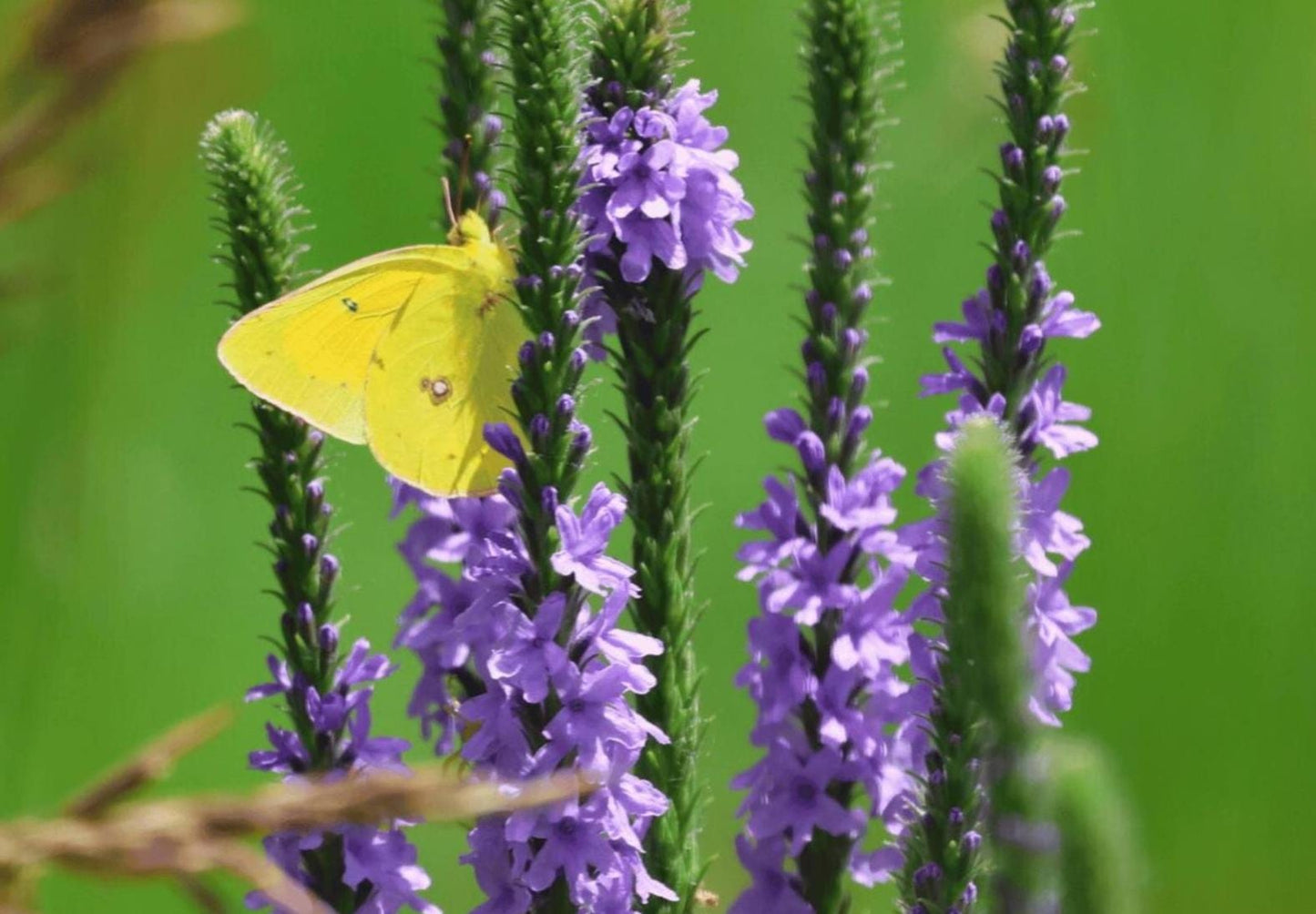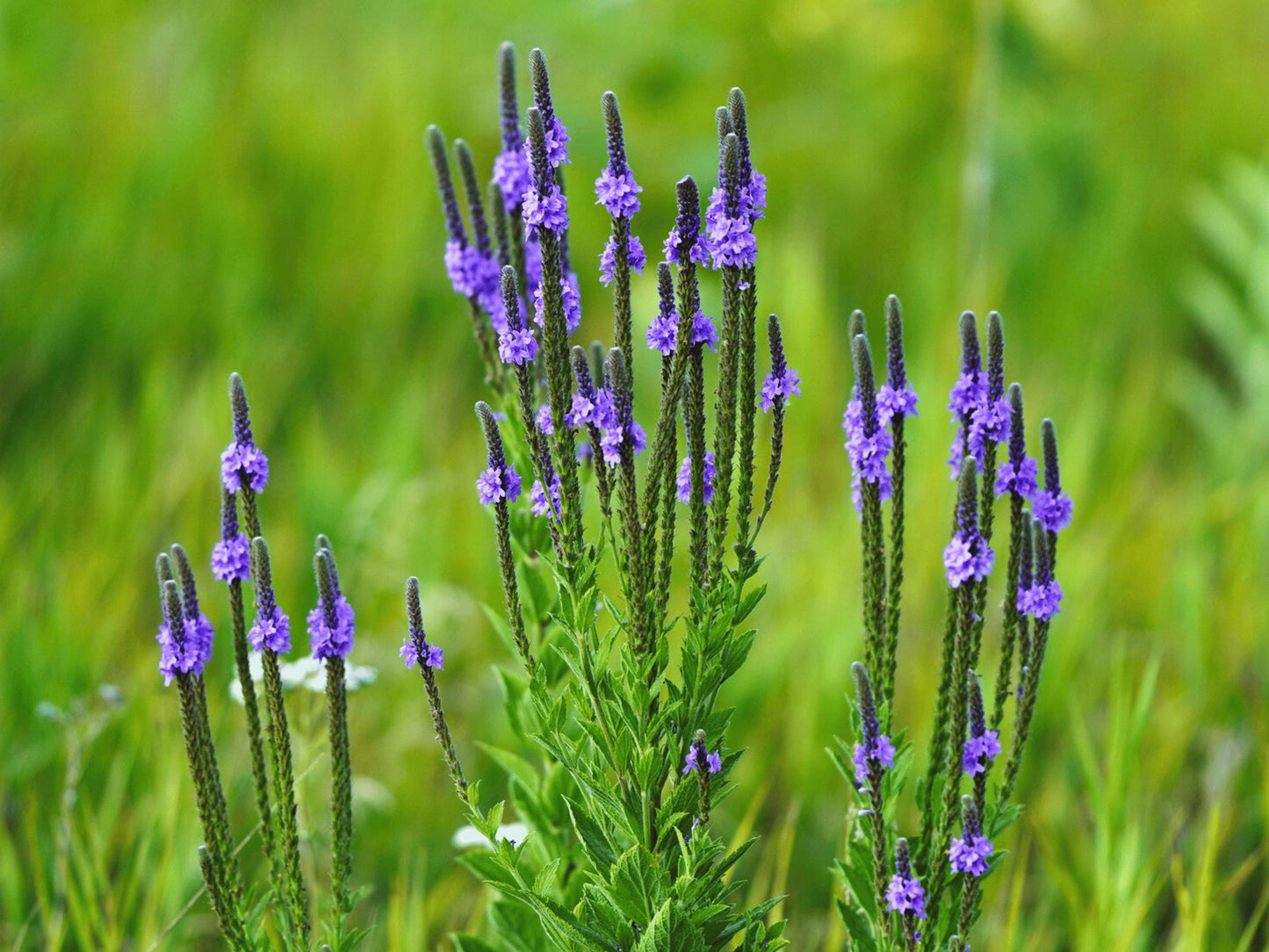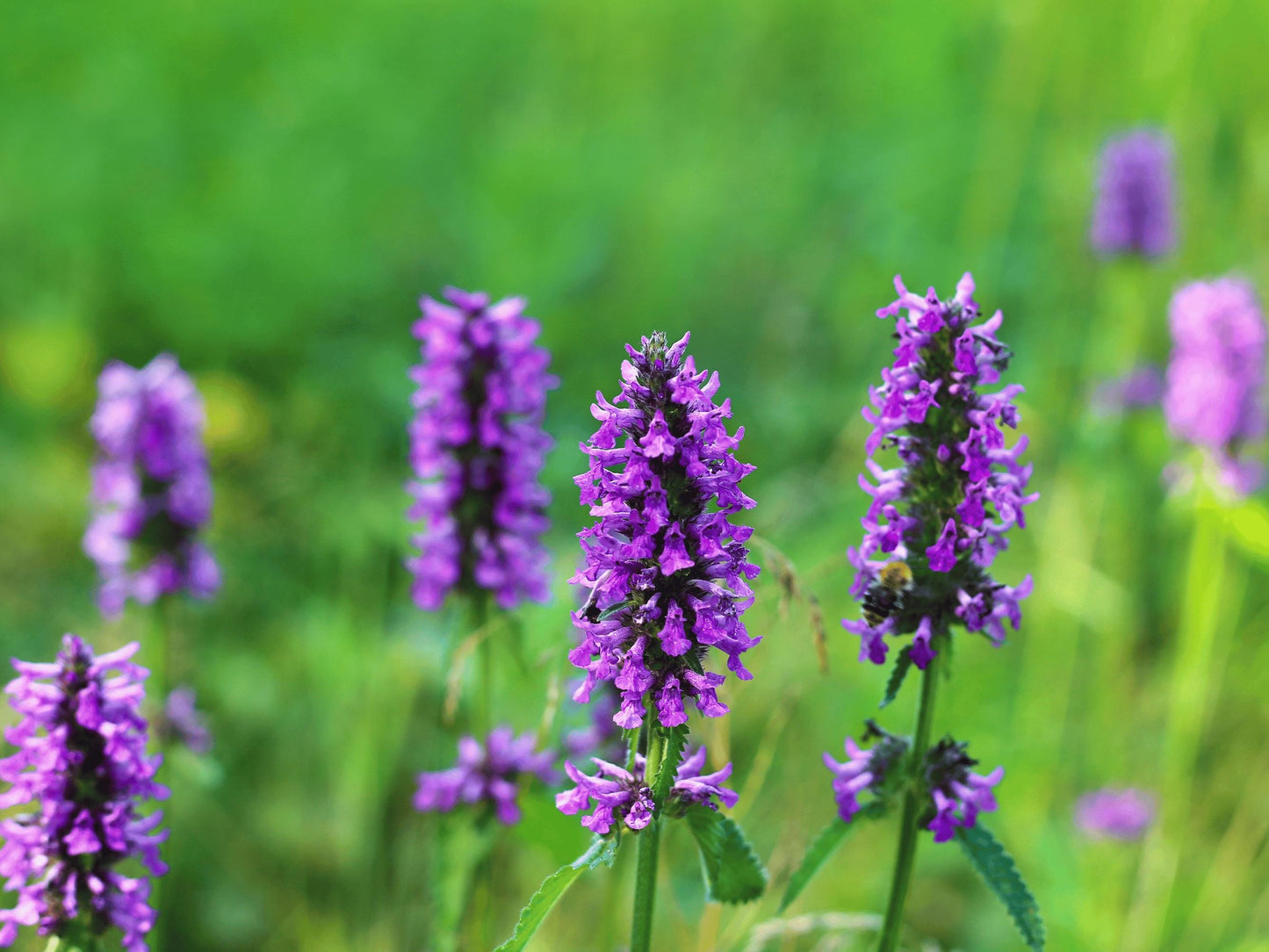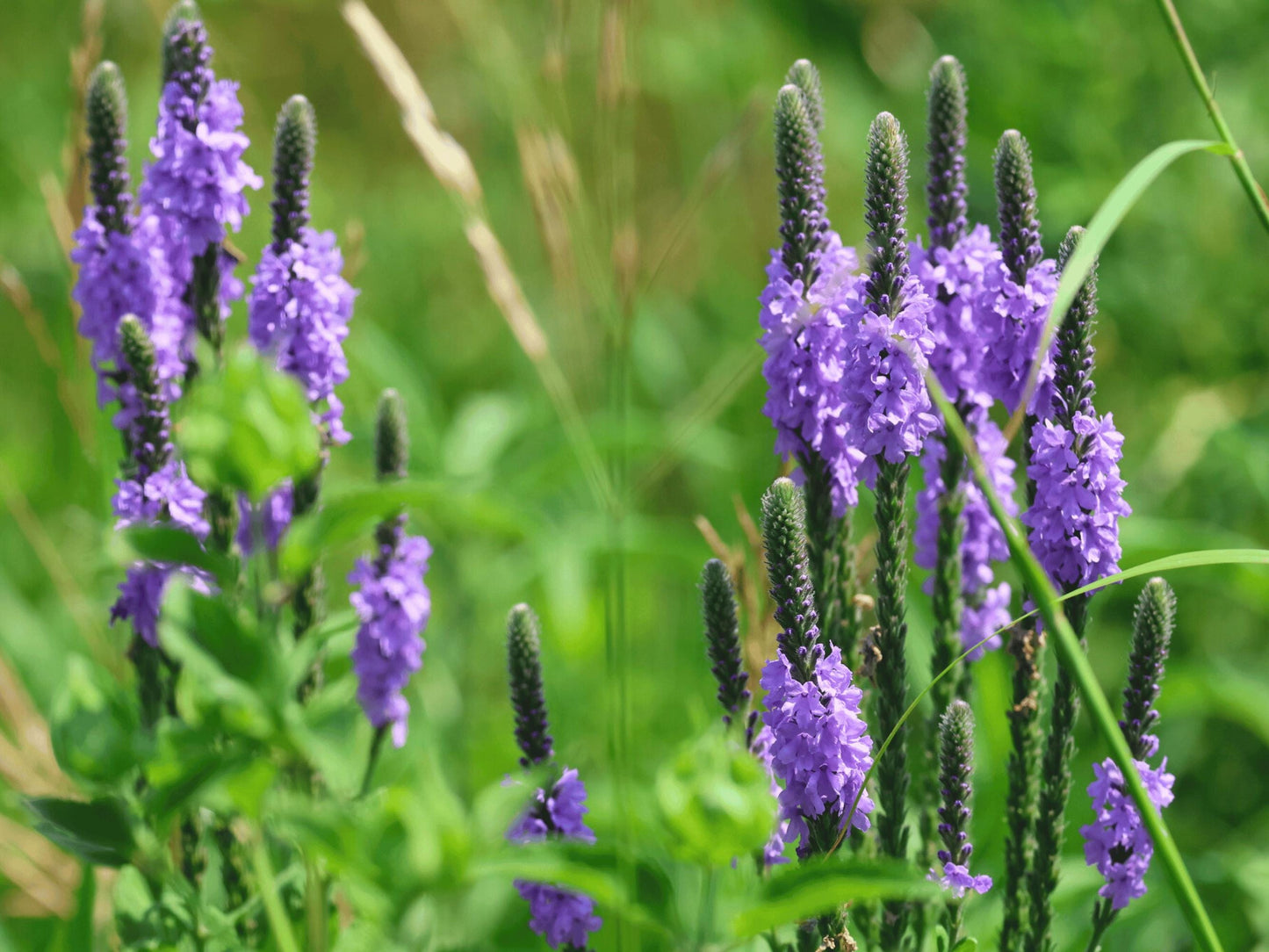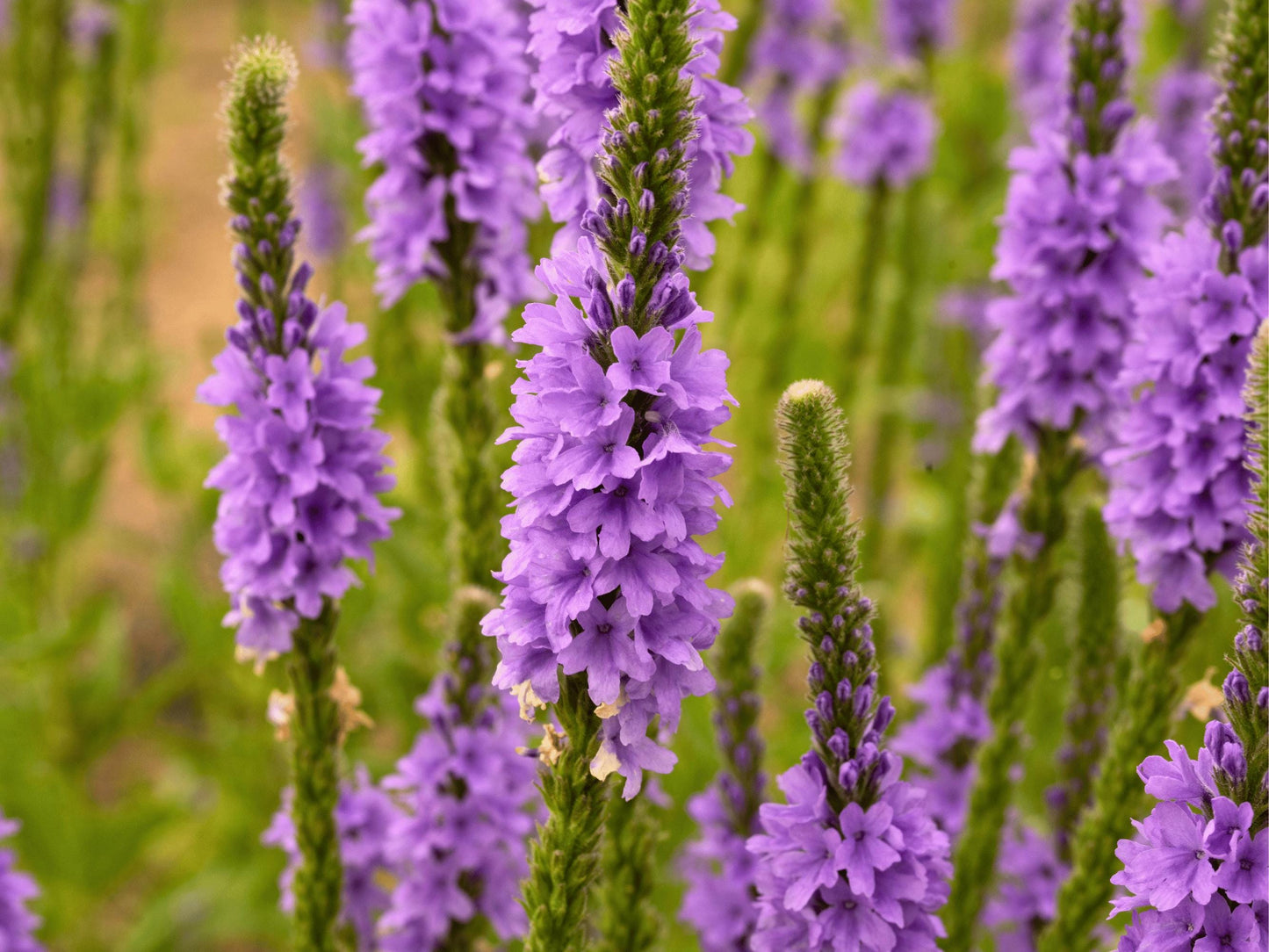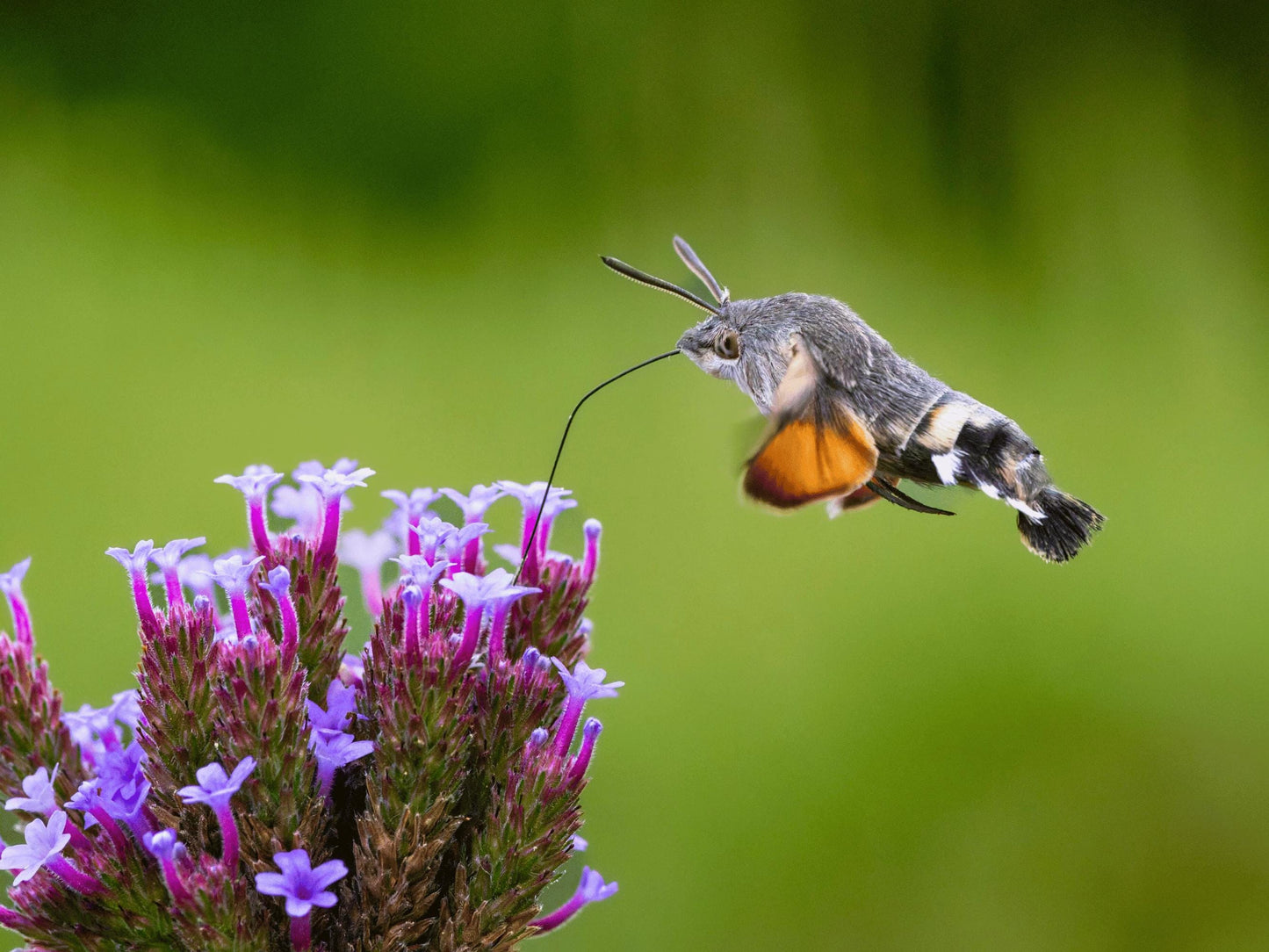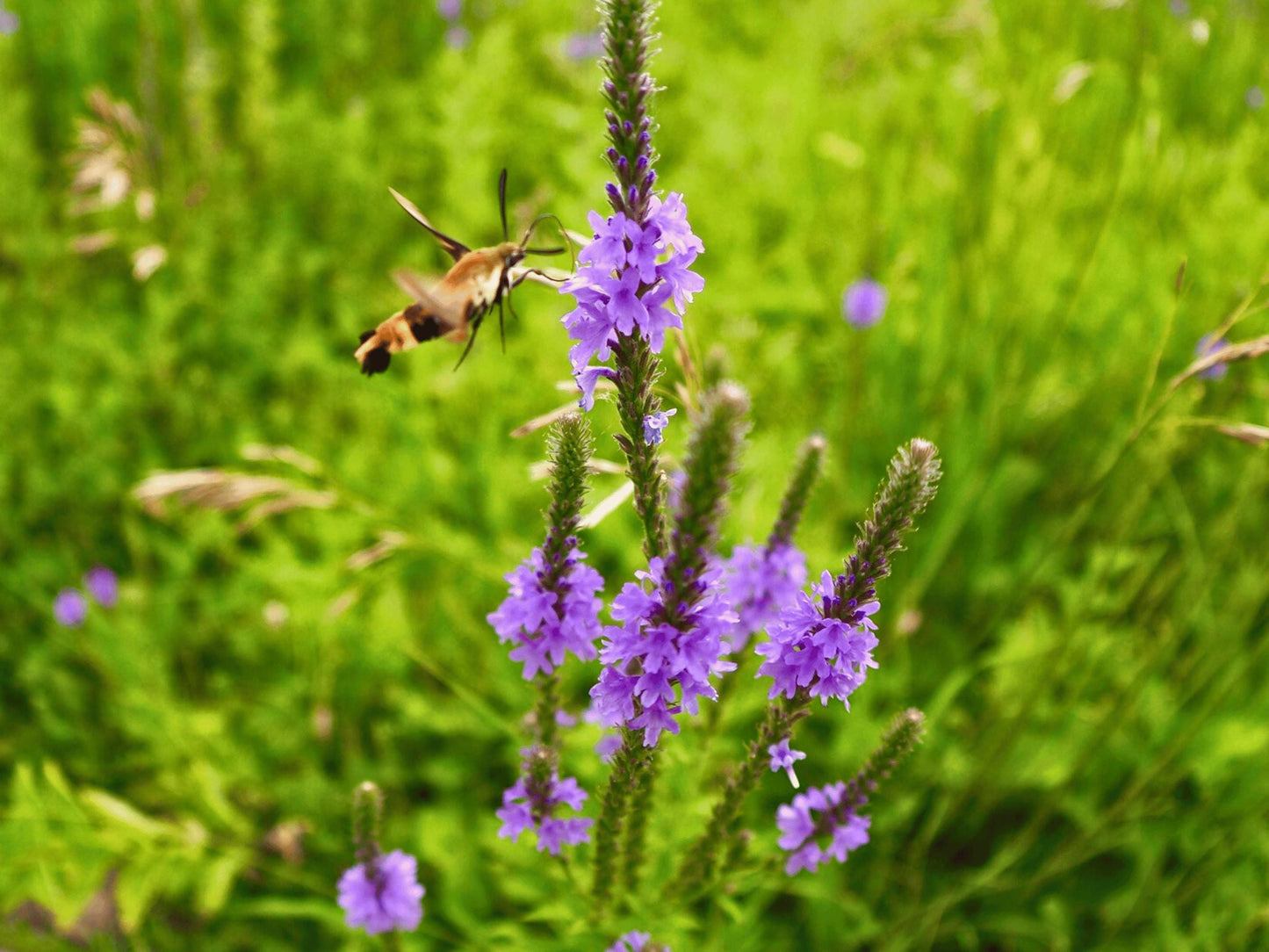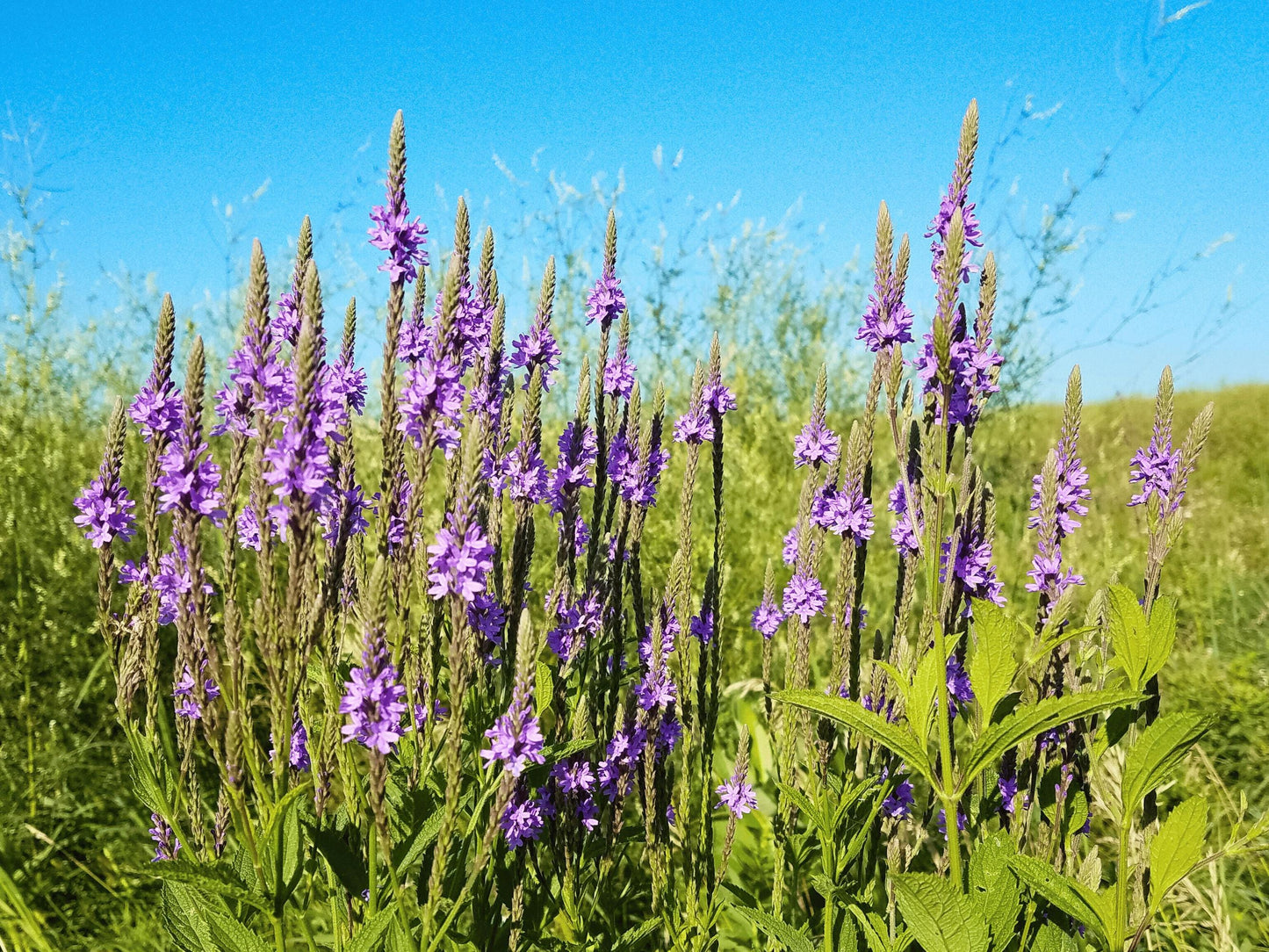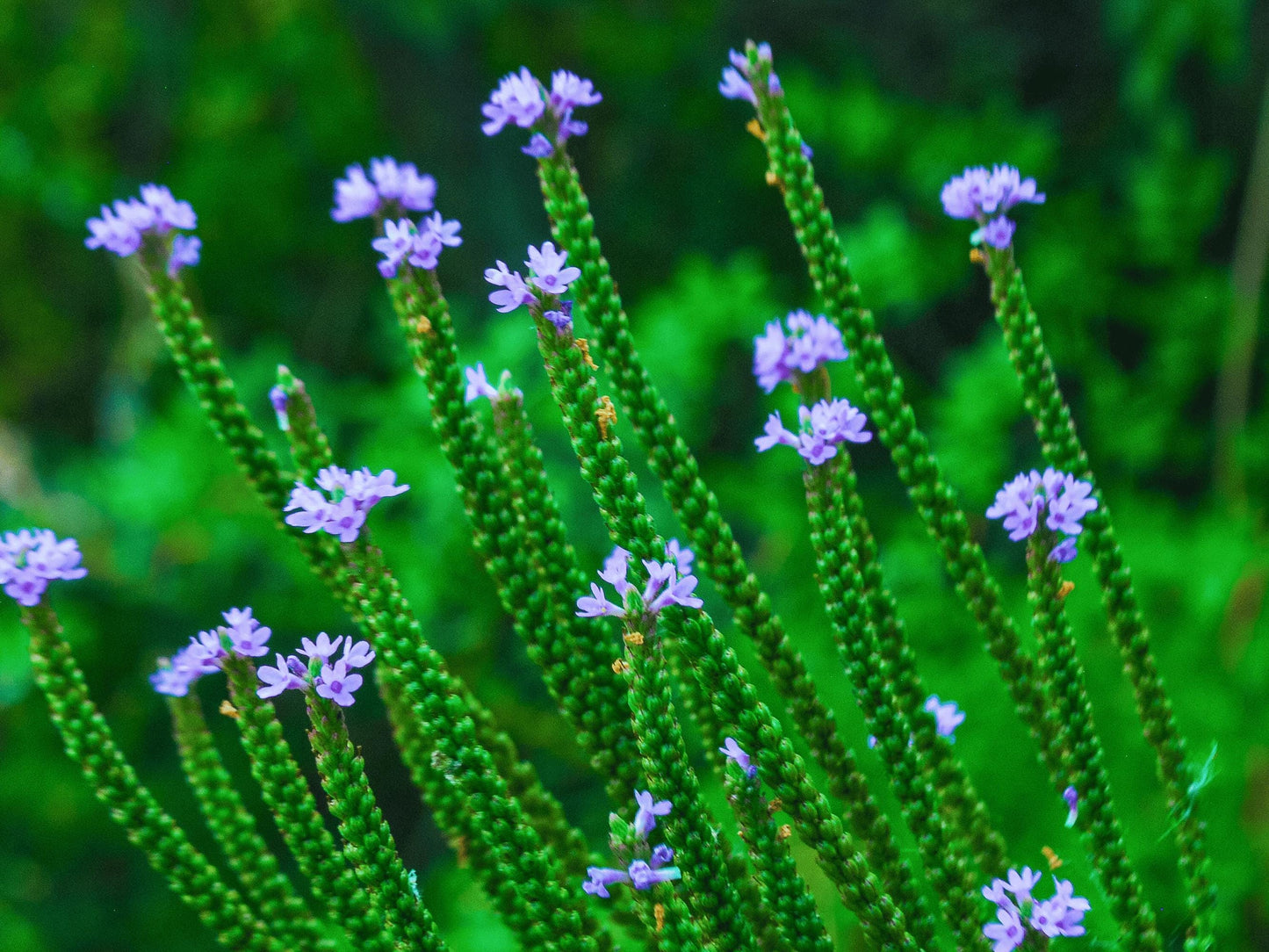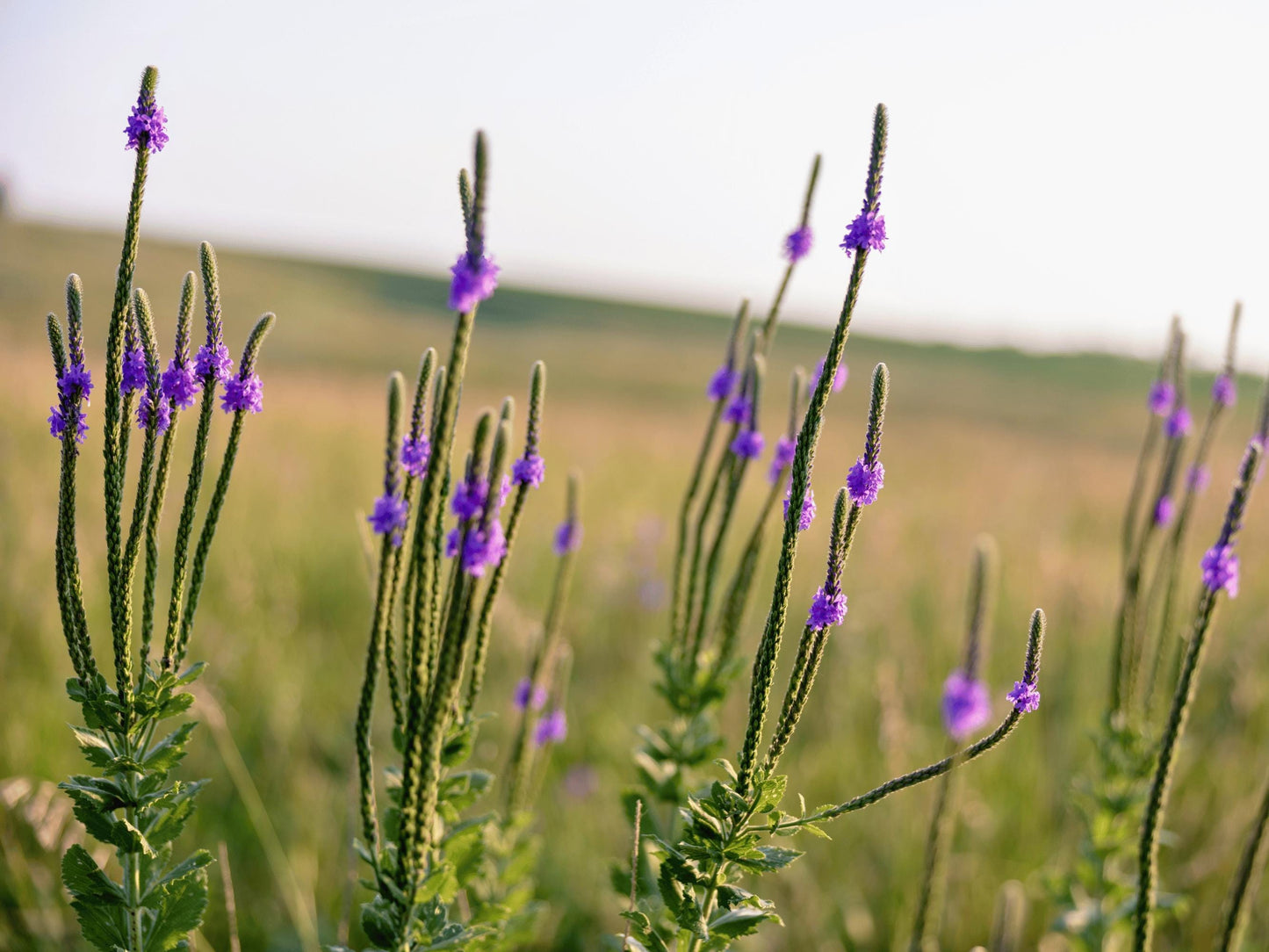Hoary Vervain (Verbena stricta) is a hardy native heirloom wildflower known for its tall spires of lavender-purple blooms and its ability to thrive in tough, dry soils. It is easy to grow, making it an excellent choice for beginner gardeners and pollinator-friendly landscapes. This perennial thrives in prairies, meadows, and sunny garden borders, where it adds vertical interest and provides nectar for a wide variety of beneficial insects. Its flowers are especially attractive to butterflies, native bees, and other pollinators.
SCROLL DOWN FOR DETAILED GROWING INFO
All Nimble NiteCap Seeds are:
Heirloom
Organic
Non-GMO
Open Pollinated
Untreated
US Grown
Growing instructions included
Regular testing is conducted to uphold the highest germination standards, all the while employing appropriate seed storage techniques.
Sustainable Packaging & Shipping:
NimbleNitecap seeds are packed in eco-friendly, compostable seed packets. Seed packets are printed in-house with vegetable-based inks on biodegradable, recycled materials. (Small plastic bags are infrequently used to prevent the loss of very small seeds.)
All orders are carefully packed and shipped with tracking via USPS First Class (or Priority, if selected) in padded recycled mailers, or recycled boxes to protect your items in transit.
Most orders ship out the next business day. Please note that this time may be extended during peak season.
FREE SHIPPING on all orders of $35 or more. Flat Rate shipping no matter how many packets you order.
Common Names: Hoary Vervain, Woolly Verbena
Latin Name: Verbena stricta
Type: Flower
Life Cycle: Perennial
USDA Zones: 3 - 8
Stratification: Cold stratification recommended (30–60 days)
Germination Ease: Moderate
Sunlight: Full Sun
Moisture: Dry to medium, drought tolerant
Soil: Sandy, rocky, or well-drained soils; tolerates poor soils
Height: 2 – 5 feet
Spread: 1 – 2 feet
Color: Lavender to purple blooms with gray-green foliage
Bloom Season: Summer (June–September)
Companion Plants: Coneflower, black-eyed Susan, blazing star, butterfly milkweed
Potential Toxicity: None known
Climate Adaptability: Excellent drought tolerance, adapted to prairies and open fields
• Sowing
When to Sow Outside:
Best sown in late fall outdoors to allow natural cold stratification, or in early spring after a period of cold treatment.
When to Start Inside:
Start indoors 8–10 weeks before last frost. Cold stratify seeds for 30–60 days in moist medium in the refrigerator, then sow in trays under lights.
Days to Emerge:
14–30 days after stratification
Seed Depth:
Surface sow or lightly press into soil; requires light to germinate
Seed Spacing:
6–12 inches apart
Row Spacing:
12–18 inches apart
Hardiness:
Cold-hardy perennial; highly tolerant of heat and drought once established
• Growing
Soil:
Prefers sandy, gravelly, or loamy soils; tolerant of poor soils. Requires good drainage.
Watering:
Drought-tolerant once established. Water seedlings regularly until established, then only during extended droughts.
Light and Temperature:
Requires full sun for best flowering. Thrives in hot, dry climates.
Maintenance:
Low-maintenance wildflower. Deadheading can prolong blooming, though many gardeners allow seeds to mature to support wildlife and natural reseeding.
Container Friendly:
Can be grown in large containers, but prefers open garden settings for best growth.
• Harvesting
When to Harvest:
Flowers can be cut for arrangements throughout summer. Allow plants to remain for wildlife forage and reseeding.
How to Harvest:
Cut flower spikes at the base when blooms are open.
Drying and Storing:
Flower spikes may be dried by hanging upside down in a cool, dark place. Seeds can be collected when dry.
Edible Use:
Not commonly used for culinary purposes.
• Seed Saving
Seed Collection:
Allow flower spikes to dry on the plant. Seeds mature in late summer to fall.
Seed Cleaning:
Shake or rub dry seed heads to release small seeds.
Seed Storage:
Store in a cool, dry place. Seeds remain viable for 2–3 years.
• Additional Information
Forage for Pollinators:
A pollinator magnet, Hoary Vervain is especially beloved by butterflies, native bees, and bumblebees. It is also a host plant for the common buckeye butterfly.
Origin:
Native to North American prairies, meadows, and open fields.
Nomenclature:
The name “Verbena” comes from a Latin term meaning sacred plant, while “stricta” refers to its upright growth habit.
History:
Hoary Vervain has long been valued as a hardy prairie wildflower, often included in native restoration projects for its ability to thrive in poor soils and harsh conditions while supporting pollinators.
Potential Toxicity:
Non-toxic to humans and animals.
Climate Adaptability:
Adapted to drought-prone areas and extreme temperatures. Ideal for xeriscaping, prairie gardens, and pollinator habitats.

